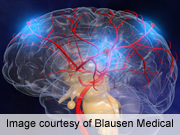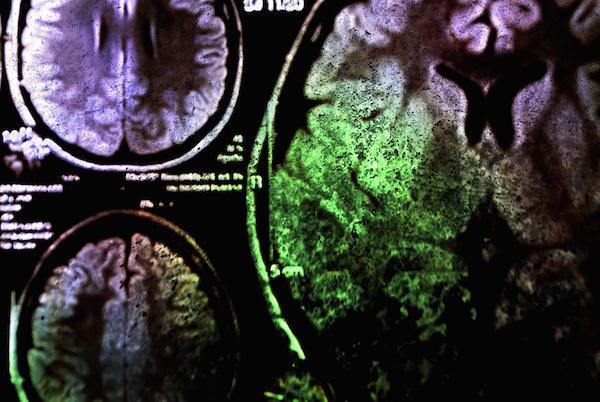
WEDNESDAY, March 21 (HealthDay News) — A new medication called tenecteplase may be more effective at treating strokes caused by clots in large blood vessels in the brain than the current standard therapy, Australian researchers report.
“This study compares a newer thrombolytic medicine [tenecteplase] to the standard thrombolytic medicine [alteplase] in the treatment of patients with acute ischemic stroke,” explained study author Dr. Mark Parsons, an associate professor at the University of Newcastle School of Medicine and Public Health and a senior staff specialist in neurology at John Hunter Hospital, in Newcastle.
Thrombolytic drugs are essentially clot-busters. The researchers found that tenecteplase was better at restoring blood flow to the brain after a stroke than alteplase. In addition, fewer people treated with a higher dose of tenecteplase had a serious disability at 90 days after their stroke compared to those on alteplase.
Results of the study are published in the March 22 issue of the New England Journal of Medicine. Funding for the study came from the Australian National Health and Medical Research Council.
Acute ischemic strokes occur when a clot blocks blood supply to the brain. Both tenecteplase and alteplase are from a class of medications known as a tissue plasminogen activator (tPA). When given within three hours of the first stroke symptoms, intravenous tPA can open up the blocked blood vessel in the brain and prevent further brain damage.
Recovery after receiving one of these medications can be fast and dramatic, though this isn’t always the case. And, excessive bleeding is a significant risk factor associated with these medications.
The current study included 75 people treated within six hours after an acute ischemic stroke. All received advanced computed tomography (CT) imaging to ensure that there wasn’t any stroke-induced brain damage yet, and the researchers also looked for people who were having strokes in a large blood vessel.
Parsons said the researchers used the advanced CT screening to “identify stroke patients with the greatest potential to benefit from thrombolytic treatment.”
The patients were randomly assigned to receive either a standard dose of alteplase, or one of two different doses of tenecteplase (0.1 milligrams (mg) per kilogram (kg) of body weight or 0.25 mg per kg). A kilogram is about 2.2 pounds. All received the medication less than six hours after the onset of symptoms, according to the study.
Blood flow of both tenecteplase groups was restored more effectively than for the alteplase patients. People in the tenecteplase groups also showed greater clinical improvements than those on alteplase after 24 hours.
The higher dose of tenecteplase appeared to be more effective. After 90 days, 72 percent of those treated with the higher dose of tenecteplase were free of serious disability compared to just 40 percent of those on alteplase.
There were no significant differences in excessive bleeding in the brain or other serious adverse events, according to the study.
“The perfect clot-busting drug would open up the blockage without causing any hemorrhage. Short of that, the goal is to find a drug that works at least as well, if not better, and that’s as safe,” said Dr. Keith Siller, director of the Comprehensive Stroke Center at NYU Langone Medical Center in New York City.
“They showed that under ideal circumstances, this drug works well. It still remains to be seen if other types of strokes will be helped as much,” said Siller.
Hemorrhagic strokes, which occur when a blood vessel in the brain bursts, are less common than ischemic strokes.
Parsons said he and his colleagues hope to broaden the study population in their next study. They said the current findings warrant moving on to a study comparing the drugs’ performance within a shorter window for treatment.
Siller said that while researchers are trying to refine the type of clot-busting drug that might work best, the message to the public remains clear: If you have any symptoms of stroke, get to the hospital as soon as possible.
“All of these treatments require patients to come to the hospital as soon as possible,” noted Siller, who added that treatments currently need to be administered within three hours after the onset of symptoms.
More information
Learn the warning signs of stroke from the National Stroke Association.

